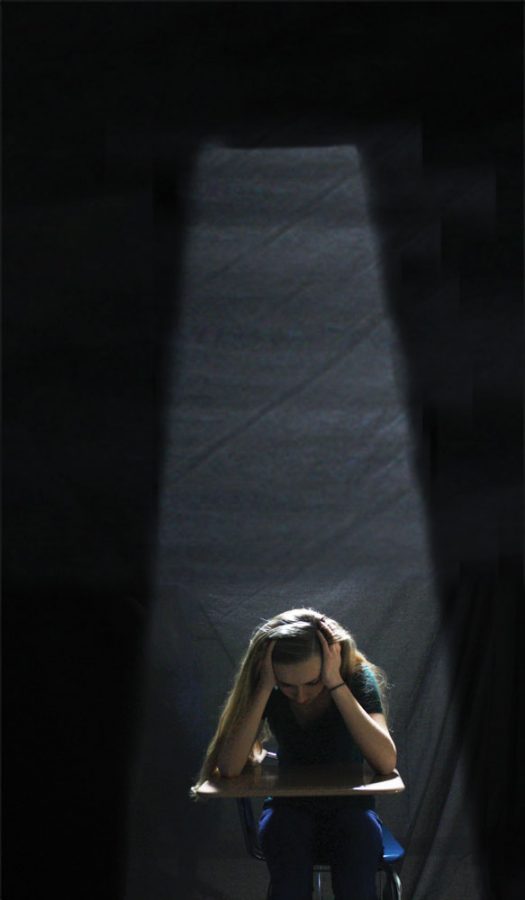Photo by Jae Rhee; photo illustration by Devesh Kumar
[heading class=”Closing off classrooms hurts education”]The Bruins will play not only for the win, but to honor fallen teammate[/heading]
Biology 101: all living things need energy in order to survive. For humans, our main source of energy is the bright, golden, all-encompassing sun — the sun that allows biodiversity to cover every square inch of the face of the earth that sustains the human life in ways unimaginable. To say the least, we would not exist without sun.
RBHS, however, doesn’t think its students need the sun. Here, they prioritize environmental efficiency over the students’ well-being. Instead of being able to look out at a glimpse of nature, RBHS students must spend approximately 5,000 hours a year in dim fluorescent-lighted rooms that occasionally deign to a tiny window in the corner.
Confining young, maturing minds indoors for eight consecutive hours is absurd. Students feel imprisoned and restrained in classrooms where learning should be cultivated — not remonstrated. Sitting in on a lecture over parametrics in the basement of a 43-year-old building with brick cemented walls that blocks off cellular service does indeed transmit a prison-ish vibe.
Administrators have to keep in mind that not all students participate in fall, winter or spring sports in which practices and games are held outdoors. Some students simply do not have the time or opportunity outside of the classroom to enjoy the weather outside. After all, there’s no better feeling than gulping in a lung full of fresh oxygen and nitrogen, which always seems to do the job in clearing the mind.
While RBHS’ brick exterior and floor planning might make installing more windows now a near-impossible feat, there are still ways to incorporate the outdoors into the curriculum. Biology teachers could find ways to use nature to illustrate biological concepts, while math teachers could potentially use flowers to demonstrate the Fibonacci sequence.
Even if teachers aren’t able to tie in classwork with the outdoors, devoting some class time to being outside is beneficial for everybody. Spending just five minutes outside can have tremendous benefits for the human body and for student learning. According to the National Wildlife Federation, schools with environmental education programs scored higher on standardized tests and children’s stress levels fell within minutes of seeing green space.
Introducing an outdoor program might seem like a hassle for administrators and teachers, but RBHS has already introduced slight changes to students’ classroom experience. This year, teachers were asked to include more physical activity into the classroom, which translated to brief calisthenic activities with their students.
While this is an admirable effort at improving students’ health and well-being, a weekly requirement for some outdoor activity would be a much better use of class time. Instead of doing some jumping jacks and then sitting back down, students and teachers should be able to enjoy some sunshine, stretch their legs and continue learning.
Let us be an innovative school and incorporate the environment into how students learn, in order to improve the welfare of our future leaders and educators. A minute issue like the lack of windows and outdoor activity can seem insignificant, but when the problem has ramifications on one’s physical and mental health, we all have a responsibility to stand up for ourselves.
Categories:
Oh, say, can you see
May 5, 2016
0
More to Discover














































































